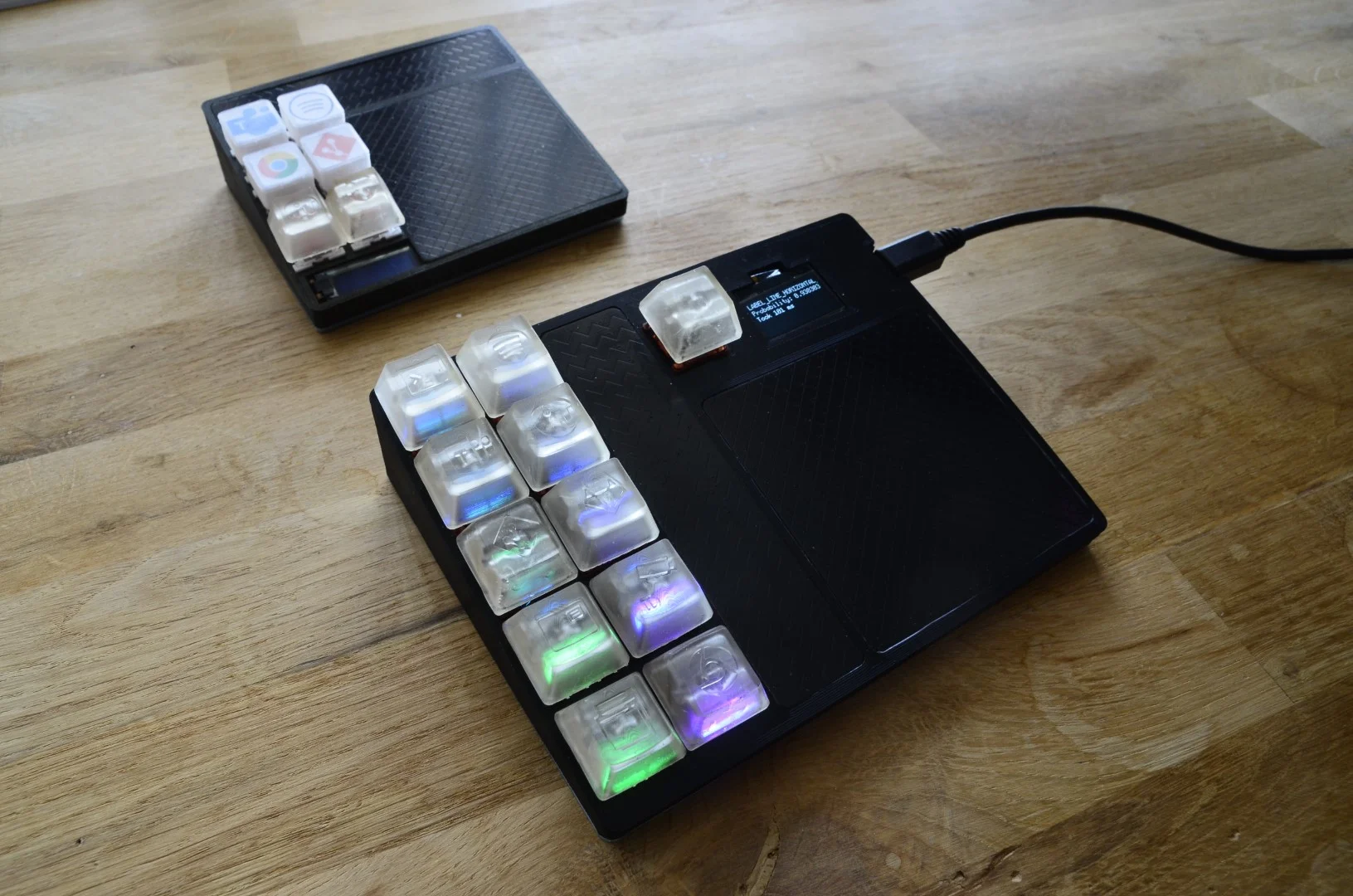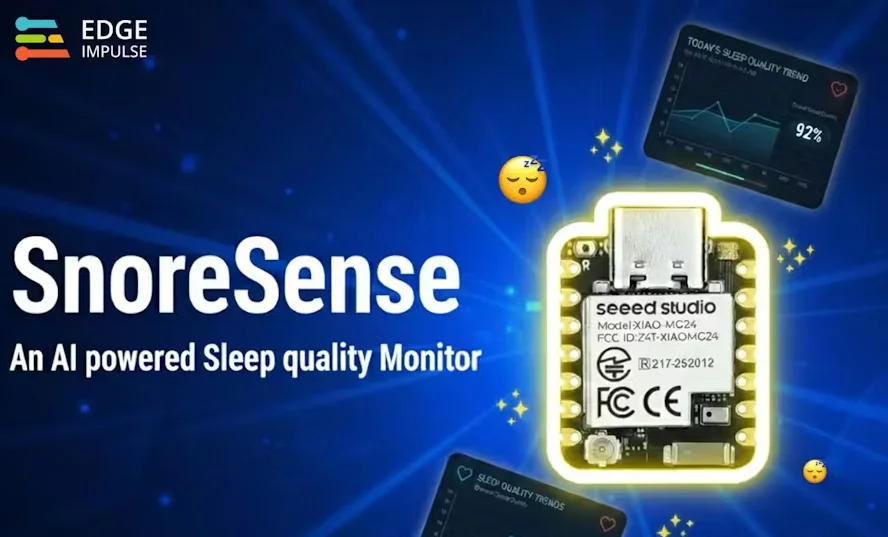Tensorflow Micro
v2.20.0Features
-
Comprehensive ecosystem for machine learning research and production deployment.
-
Stable Python and C++ APIs with additional support for Java and JavaScript.
-
High-level Keras API for fast prototyping using sequential, functional, and subclassing models.
-
Eager execution for immediate operation evaluation and simplified debugging.
-
Graph execution via tf.function for optimized performance and cross-platform portability.
-
Automatic differentiation using tf.GradientTape for building complex neural network architectures.
-
Flexible data input pipelines using the tf.data API for efficient multi-threaded preprocessing.
-
Distributed training support across multiple GPUs, machines, and Tensor Processing Units (TPUs).
-
XLA (Accelerated Linear Algebra) compiler for optimizing and JIT-compiling computation graphs.
-
Comprehensive visualization and debugging suite through the TensorBoard toolkit.
-
Model optimization tools including magnitude-based weight pruning and post-training quantization.
-
Native support for mobile and edge devices via the lightweight TensorFlow Lite solution.
-
Production-grade model serving and lifecycle management through TensorFlow Extended (TFX).
-
Extensive library of pre-trained models and components available via TensorFlow Hub.
-
Specialized modules for probabilistic reasoning, reinforcement learning, and ranking algorithms.
-
GPU acceleration support for CUDA-enabled cards on Ubuntu and Windows systems.
-
Device plugin support for hardware-specific acceleration on DirectX and MacOS-metal.
-
Official Docker containers for simplified environment setup and reproducible builds.
Architecture
TensorFlow is built on a multi-layered architecture designed for flexibility and high-performance computation. At its core is a distributed runtime engine that handles the execution of computational graphs across various hardware backends. The framework supports two primary execution modes: Eager Execution, which evaluates operations immediately for an intuitive development experience, and Graph Execution, which uses the XLA (Accelerated Linear Algebra) compiler to optimize computations for production environments. This dual approach allows developers to transition seamlessly from research to high-scale deployment.
The system is organized into several key subsystems that interact to manage the ML lifecycle. The Keras API serves as the high-level interface for model definition, while tf.data manages complex input pipelines. Below these, the core C++ engine interfaces with hardware-specific libraries like CUDA for NVIDIA GPUs or the XLA compiler for TPUs. The architecture also includes a Device Plugin mechanism, allowing third-party hardware providers to integrate specialized accelerators like DirectX-based GPUs or Apple’s Metal framework without modifying the core codebase.
Core Components
- Keras: The high-level API for building and training deep learning models.
- tf.data: A library for constructing complex input pipelines from diverse data sources.
- XLA: A domain-specific compiler for linear algebra that optimizes TensorFlow computations.
- TensorBoard: A suite of visualization tools for inspecting and understanding model runs.
- TensorFlow Lite: A dedicated engine for deploying models on mobile and embedded devices.
Use Cases
This library is ideal for:
- Deep Learning Research: Developing and testing new neural network architectures using flexible subclassing and custom training loops.
- Computer Vision: Implementing image classification, object detection, and segmentation models for real-time applications.
- Natural Language Processing: Building transformers and sequence-to-sequence models for translation, sentiment analysis, and text generation.
- Production ML Pipelines: Deploying scalable machine learning models using TFX for data validation, training, and serving.
- Edge Computing: Optimizing and running models on resource-constrained hardware like Android devices and Raspberry Pi.
- Reinforcement Learning: Training agents to solve complex decision-making tasks using the TF-Agents library.
- Probabilistic Modeling: Combining deep learning with probabilistic reasoning using TensorFlow Probability.
Getting Started
To begin developing with TensorFlow, the easiest method is to install the library via the Python package manager. For standard CPU and GPU support on Linux and Windows, use pip install tensorflow. For users requiring specific CUDA configurations, the tensorflow[and-cuda] package is recommended. Developers can immediately verify their installation by importing the library and performing basic tensor operations, such as tf.add(1, 2).
Comprehensive documentation, including beginner and expert tutorials, is available at tensorflow.org. For interactive learning, Google Colab provides a hosted Jupyter notebook environment that requires no local setup and offers free access to GPU and TPU resources. Detailed API references for Python, C++, and other supported languages can be found in the official API Documentation.
Related Projects (11)
onechuk: Machine Learning Powered Wii Nunchuk
A modified Nintendo Wii Nunchuk controller powered by an ESP32 running TensorFlow Lite for Microcontrollers. It enables gesture-based commands via the joystick, supporting multiple action profiles like BLE HID media controls and administrative functions.
SAMA5D27 Resource Sharing
A comprehensive resource repository for the Microchip SAMA5D27 Cortex-A5 MPU, providing extensive documentation and guides for Linux development, bare-metal programming, and various RTOS ports. It features in-depth tutorials for NuttX, RT-Thread, and ThreadX, including driver integration for LVGL, EtherCAT, and TensorFlow Lite.
Tensorflow Lite Micro for RT-Thread
A port of the Tensorflow Lite Micro inference framework for the RT-Thread real-time operating system. It enables the deployment of deep learning models on resource-constrained embedded systems, featuring optimizations for ARM Cortex-M cores via CMSIS-NN and support for multiple hardware platforms including STM32 and Raspberry Pi.
Magic Wand on mbed
A port of the TensorFlow Lite Magic Wand gesture recognition example to the mbed K66F platform. It utilizes mbed OS and TensorFlow Lite for Microcontrollers to perform real-time gesture detection on embedded hardware, covering the full pipeline from data collection to deployment.
MaixPy Scripts
A comprehensive collection of MicroPython scripts for the MaixPy platform, targeting Sipeed hardware based on the Kendryte K210 RISC-V SoC. It includes examples for machine vision, AI acceleration, hardware peripheral control, and multimedia processing.

Gesture-Detecting Macro Keyboard
A Bluetooth-enabled macro keyboard featuring gesture recognition powered by TensorFlow Lite for Microcontrollers on an ESP32. It combines capacitive touch sensors, physical buttons, and an OLED display to provide customizable computer control via BLE HID and AutoHotkey integration.
IMXRT1060-EVK Sample Project
A comprehensive sample project for the NXP i.MX RT1060 Evaluation Kit (EVK) featuring a dual-stage architecture with a dedicated bootloader and a feature-rich application. It integrates Amazon FreeRTOS with a full middleware stack including lwIP networking, LVGL graphics, and FatFs storage for ARM Cortex-M7 development.
Fashion MNIST on ESP32 with TensorFlow Lite Micro
An example project demonstrating how to run the Fashion MNIST TFLite model on an ESP32 microcontroller using the ESP-IDF framework. It utilizes TensorFlow Lite Micro for edge AI inference, allowing the device to classify clothing items locally.
Anjay Zephyr Client
Anjay-zephyr-client is a collection of LwM2M client samples based on the Anjay Zephyr Module and Zephyr RTOS. It demonstrates how to implement LwM2M functionality, including sensor reporting, FOTA updates, and GPS tracking across various hardware platforms like nRF9160 and ESP32.
Awesome Zephyr RTOS
A curated collection of high-quality resources, libraries, tools, and learning materials for the Zephyr RTOS ecosystem. It serves as a comprehensive directory for developers looking for official documentation, community-supported libraries, and hardware platforms compatible with Zephyr.

SnoreSense: AI-Powered Snore Detection on Seeed XIAO MG24 Sense
SnoreSense is a TinyML application designed for the Seeed XIAO MG24 Sense to detect snoring in real-time. It utilizes TensorFlow Lite Micro for on-device inference, processing audio from the onboard PDM microphone to provide a privacy-focused, low-power sleep monitoring solution.